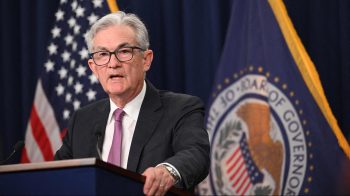Question: I hate to see this happen to the Obama administration; however, if you combine the debt created by the Bush era and the deficit spending (a.k.a. Stimulus Package and Bail Out packages) that Washington is embarking on, how can we not repeat the sky high interest rates that folded the Carter administration where cash was king accompanied by nose bleed inflation rates–especially since manufacturing has all but left these shores for cheap overseas labor? Thank you. Stephen, Cape Neddick, ME
Answer: Many people in the markets are worried that the Fed’s quantitative easing will end in a bout of high and rising inflation. Still, it seems to me the fear that inflation lies around the corner is exaggerated. The economy is still weak if not in recession and unemployment is rising. Now, it’s likely that inflationary pressures will emerge when the economy finally regains its footing. It’s a safe forecast that at some point down the road the Fed will confront a tricky monetary policy act. I’m sure we’ll go through some inflation scares. But the Fed is well aware of the risks and, while the conduct of monetary policy is as much an art as a science, Chairman Ben Bernanke thoughtfully discussed the central bank’s “exit strategy” in Congressional testimony earlier this week.
But high and rising inflation or hyperinflation? Personally, I don’t see it. For instance, the U.S. government’s Treasury Inflation Protected Securities or TIPS are forecasting that inflation will average less than 2% over the next decade. You would think investors would demand more of an inflation hedge if the threat of hyperinflation was real. The global competition for profits and markets is intense and that competition will aid central banks around the world in keeping inflation tame. I still think the long term trend is toward minimal inflation rates in an increasingly integrated world economy. Plus, central bankers have a pretty good intellectual tool kit when it comes to bringing inflation under control. What central bankers don’t really understand, what they disagree on is how to handle bubbles, market booms and market busts.
That said, the risk of high and rising inflation exists over the next 5 years or so considering the extraordinary actions the Fed has taken to bail out the banking system and avoid a depression. Even small rates of inflation, say, in the 2% to 3% range, reduce the purchasing power of savings with time.
So, since we’re dealing with personal finance questions here what’s a good way to protect your savings from inflation? A portfolio made up of mostly Treasury bills does an excellent job of keeping pace with inflation. However, the price for that inflation hedge is no growth or no earnings premium over inflation. Most of us would like to make some money on our money. That’s why the key investment product for long-term savers is TIPS. Everything can be built on top of a foundation of TIPS. For those who want to take greater risk in the search for higher rewards should allocate a larger portion of their portfolio to stocks. For those who are more risk adverse a larger investment in Treasury bills makes sense.
There’s a lot happening in the world. Through it all, Marketplace is here for you.
You rely on Marketplace to break down the world’s events and tell you how it affects you in a fact-based, approachable way. We rely on your financial support to keep making that possible.
Your donation today powers the independent journalism that you rely on. For just $5/month, you can help sustain Marketplace so we can keep reporting on the things that matter to you.


















